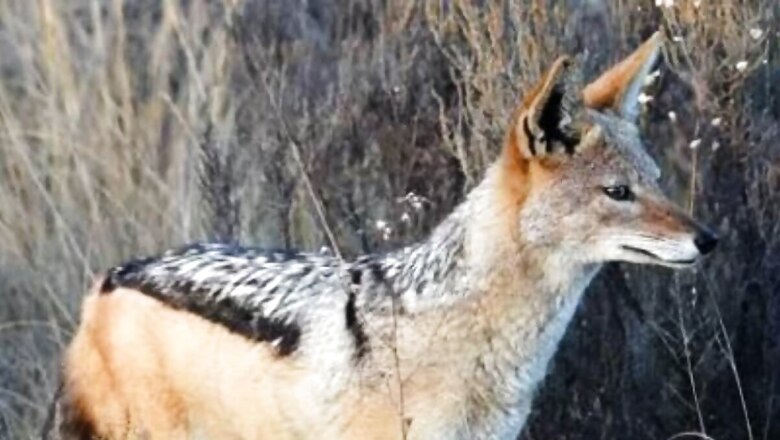
views
When we think about man-animal conflict, big animals like tigers and leopards often come to our minds. However, recent incidents of wolf attacks in Bahraich have challenged this perception. Smaller wild animals, including wolves, are increasingly posing a threat to the Terai districts of Pilibhit, Lakhimpur, and Bahraich.
In recent years, the population of tigers has grown rapidly in the forests surrounding Pilibhit. The increasing presence of tigers have pushed leopards into areas that were once the natural habitats of wolves, jackals, and wild dogs. With shrinking forest areas and increasing numbers of large carnivores, these smaller wild animals are now encroaching into populated areas.
Jackals are becoming a growing concern in Pilibhit. Senior wildlife journalist Amitabh Agnihotri said that incidents of man-animal conflict have been increasing in Pilbhit in recent years. While tigers are frequently seen roaming near areas adjacent to forest,, there has also been a rise in jackal attacks in residential zones.
Agnihotri shared that dozens of people from a village in Jehanabad were injured in jackal attacks last year, and similar incidents of man-animal conflict have been reported across the district. He suggested that wildlife experts should conduct a detailed investigation to analyze this changing behavior in wildlife. If these reasons are not identified and addressed immediately, the situation could become even more severe in future, he added.
Meanwhile, an eight-year-old boy was injured in a wolf attack while playing outside his home in the Mahsi tehsil here, his family alleged on Friday. The boy has suffered injuries, including some on his face, and has been hospitalized, a government doctor said.
In the last two months, Bahraich district has recorded eight deaths, including seven children in a series of attacks by wolves while around three dozen other people were left injured, according to official figures.
Since March, wolves have been attacking children and humans in the Mahsi tehsil area of Bahraich. The attacks increased from July 17 during the rainy season and till date, a total of eight people, including seven children, have died due to these attacks.
About three dozen people, including women, children and the elderly, have been injured and about 20 among them are seriously injured. Four wolves have been caught in the past but the attacks are continuing. Therefore, experts believe that the real man-eaters have not been caught yet.
Thermal drones and thermos-sensor cameras have been installed to catch the wolves. The forest department and administration are fully prepared to catch the man-eating wolves.
Hundreds of officers and employees of various departments are engaged in catching wolves and awareness campaigns. The forest department has formed six teams in three sections and a team of nine shooters along with 165 officers have been engaged in the search operation for wolves day and night.
These teams are being led by IFS officers called from outside the district. A team of experts specially brought from Wildlife Institute of India (WII), Dehradun are also involved in the operation.



















Comments
0 comment